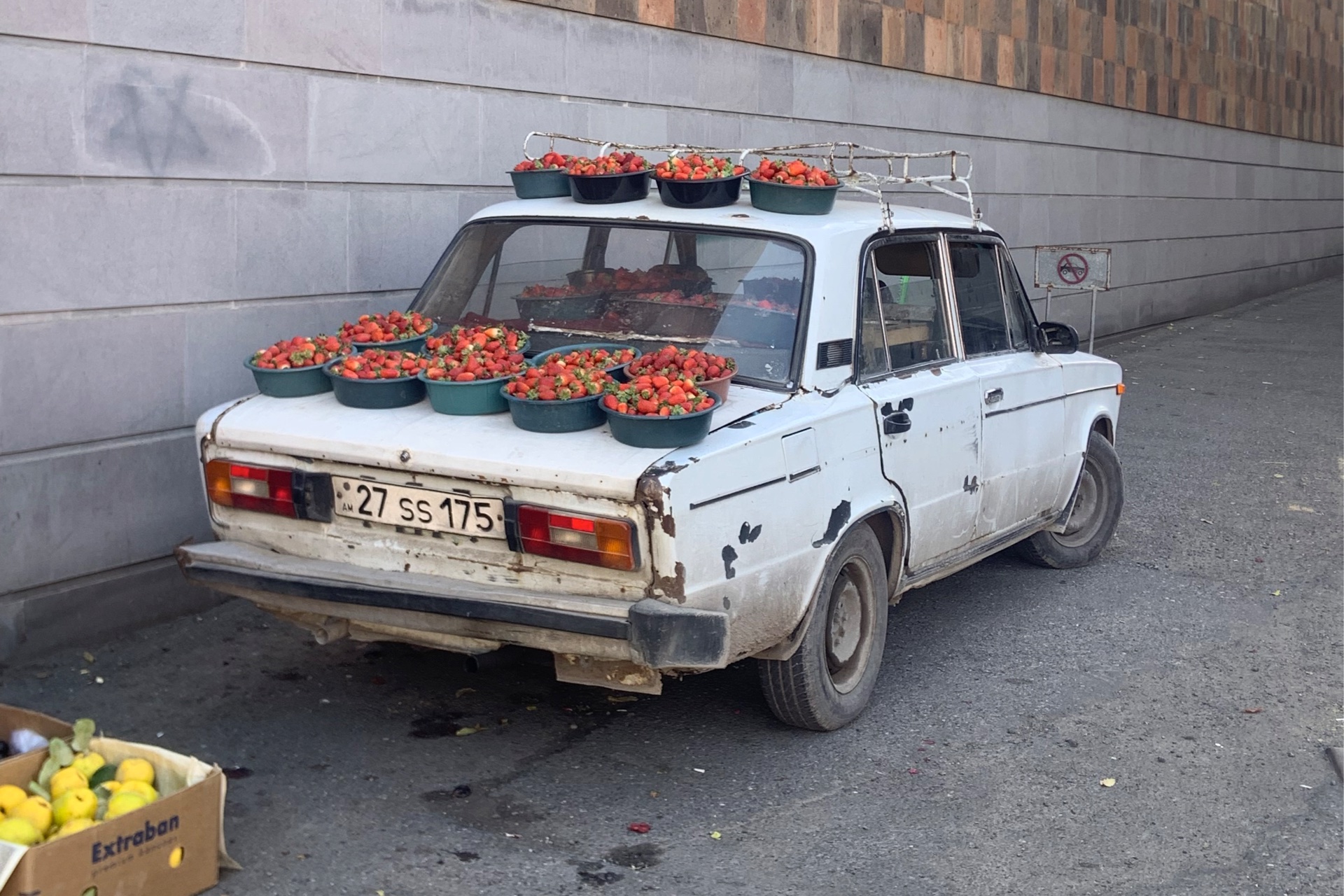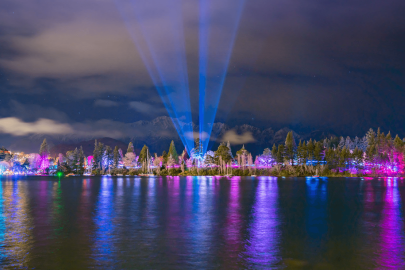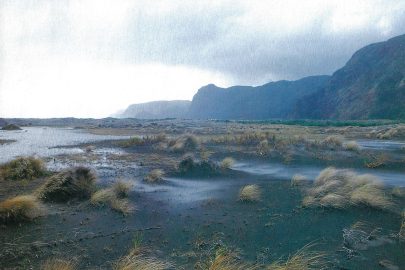Jul 30, 2024 Travel
We are inside a Soviet-era apartment block on Komitas Ave in Yerevan, Armenia’s capital — a street named for the composer, priest, martyr and symbol of the 1915–23 Armenian genocide whose vestigial spirit haunts the streets of this city. In Armenia poets are honoured on the sides of dusty highways, immortalised in faded billboards. Brief dates mark their lives and their dark, blank eyes barrel into a future which they were rightful heirs to but did not see. In the artists’ pantheon in the Shengavit district, Komitas, solemn and in thought, rises from bronze and chiselled granite, head askance as he gazes into the pages of a book that disintegrates into burnished, unformed alloy. The hewn rubble into which the book dissolves suggests the disappearance of a history that yet insists on its survival. In collecting thousands of the folk songs of Western Armenia, Komitas, born Soghomon Soghomonian in 1869, rescued a cultural heritage that would have otherwise disappeared alongside the 1.5 million people exterminated by Turkey in the genocide. Komitas was not killed alongside his compatriots, but the brutalities of what he witnessed assaulted his mind and broke his sanity — he died in France in 1935 after 16 years in a psychiatric clinic. The day I visit the pantheon, the brightness of the sun cuts at the sculptures. Shadows slant like elongated fingers across the stone arches and the walls that barricade the compound. Single carnations have been thrown at the martyr’s feet.
Inside the fourth-floor apartment is a small gathering of four. Thin pink curtains are drawn across tall windows that overlook the twilight traffic of the long avenue below. Outside, the city is getting dressed for Christmas. My hosts are connections of the friend I’ve travelled to Armenia to visit; they cede their native language, Armenian, to accommodate my English. Hayk is pacing the floorboards, his mind sharpening its talons of thought*. Language is a technology, he is saying, and greatly insufficient — it is not the primary means by which we understand one another. Aren, impervious, is crouched on the floor, brushing ash from the keyboard of his computer as he scrolls through music videos on YouTube. Anahit, a journalist, declares between drags on a thin cigarette that she prefers new countries. Critical of the nationalistic pride of those who belong to venerable countries, she looks with envy upon nations she believes to be unshackled from the leaden weight of the past. Armenia is a nation that reifies its religious heritage, she continues, and one freighted by the shadow of the genocide, to which all stories, histories and losses lead.
Armenia, a country and civilisation forged from mountains and besieged many times over its 40 centuries, is usually forgotten by the world. To be a marginalised place and yet one of the world’s oldest civilisations is a strange paradox. The martyred skeletons of Christ’s disciples are buried in Armenian soil; the nation was also the first to adopt Christianity as its state religion, in the form of the Armenian Apostolic Church, in AD 301. A century later, one of the world’s oldest alphabets was born from the mind of a brilliant son, Mesrop Mashtots; his writing system was credited with saving the nation against assimilation by competing empires. Another beacon regarded as the symbol of the nation is Mt Ararat, an apparition that rises above the pink capital city like a distant planet. Historically on Armenian lands — atop its peak is the claimed resting place of Noah’s Ark — Ararat is now Turkish, but still stands in the collective consciousness of the nation. The western highlands, once the historical homeland of Armenians, are also now part of Turkey — formerly the Ottoman Empire, dissolved in 1922.
This transition from Ottoman rule to modern Turkey is the context in which the genocide of the Armenians — the first genocide of the 20th century, though one subsumed under the weight of the Holocaust some years later — was committed by the Turks. During the Great War (little did participants know this war was to set the blueprint for a second), starting in 1915, the Ottoman authorities labelled the Armenian population ‘traitors’ to the empire. Waves of massacres, clearances and deportations began. In April 1915 the dictatorship ruling Turkey began mass-arresting and deporting hundreds of Armenian leaders and intellectuals from Constantinople and elsewhere across the empire, along with members of the Greek Orthodox and Syrian Christian sects.
In total, an estimated 1.5 million Armenians were murdered — some killed outright, some sentenced to death marches into the barren Syrian desert where they were left to starve. Children who survived the extermination of their families comprise the ancestors of today, scattered as they were in orphanages across Syria, Jordan, Palestine, Lebanon and Iran. The forced exodus and mass killing of a minority within a sovereign empire inspired the rising Adolf Hitler. In a 1939 speech ahead of the invasion of Poland, he asked, “Who, after all, speaks today of the annihilation of the Armenians?”
Before Edward Said’s 1979 book The Question of Palestine there was ‘the Jewish question’, first raised in France and England in the 18th century, and then ‘the Armenian question’, a debate in 1878 as to what security and freedoms Armenians should enjoy under the Ottoman Empire. Thirty-some years later the ‘question’ was answered by expulsion and murder. Modern-day Turkey continues to deny the fact of the genocide, and it was only in 2021 (though this ought not be surprising) that the United States officially recognised the mass killings as genocide. President Joe Biden declared then a “recommitment to preventing such an atrocity from ever again occurring”. Today, a century on from the horror, less than a third of Armenians actually live in Armenia, and in response, the country is engaged in a nation-building project of its own.
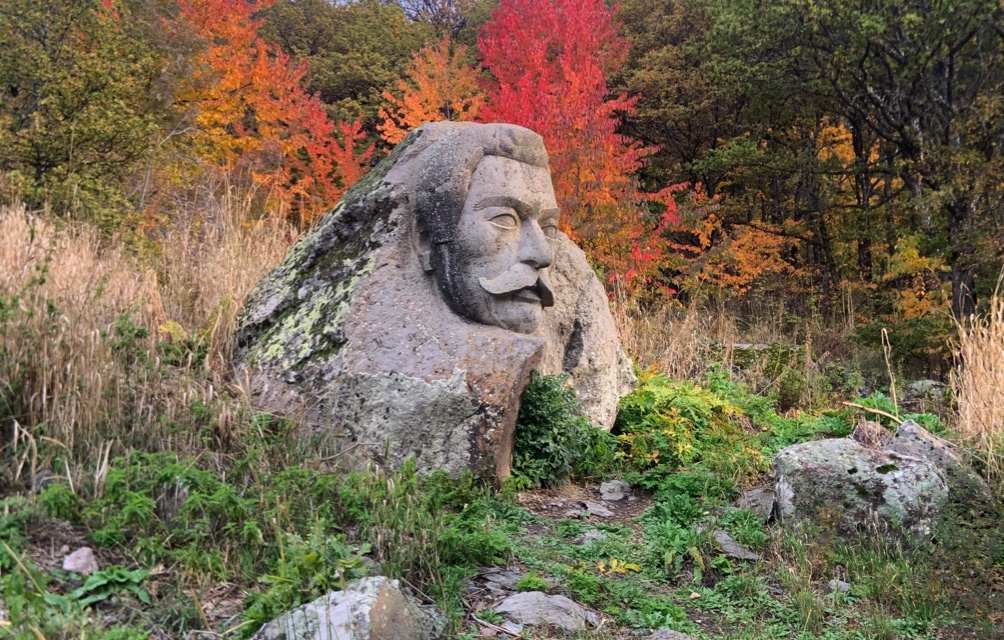
Armenia is ancient. Contemporary arguments about its political history are frequently drawn back to the country’s division in AD 387 between the Byzantine Empire of the west and Sassanid Persia of the east, and the country was long treated by rival powers as a small square on a larger chequerboard. By the 19th century Eastern Armenia had fallen under the Russians, while the majority of the traditional Armenian homeland in the west remained within the Ottomans’ domain. Armenia became a Soviet republic in 1920, then gained independence in 1991 with the fall of the Soviet Union. The early years of emancipation were marked by total collapse — bread lines, scant supplies, intermittent electricity — but many characterise those days of scarcity and impoverishment as underlain by a shimmering optimism. It was a mirage that quickly crystallised and shattered, yet some Armenians still cite these memories as among their happiest. The promise of freedom is perhaps its own kind of bread.
Geographically in the South Caucasus but culturally and geopolitically attuned to Eastern Europe, Armenia is a kind of tapestry, a weaving together of nominally Eastern and Western cultures, with an altogether other layer linking Soviet Russia with the Middle East through an ancient Christianity of salvaged ruins, monasteries and stone crucifixes ascending highways. In Yerevan, broad fig, walnut and gnarled mulberry trees with their wide green boughs climb above rubble and below smog from the burning of garbage — Armenia’s answer to waste disposal — amid the interminable, honking traffic of streets that are four lanes wide. Hedging the city’s streets are buildings of the black and pink stone known as tuff, the solemn buildings of Soviet modernist ordonnance and the prefab concrete of khrushchevka. The former Eastern Bloc apartments are under various conditions of collapse or in a permanent state of construction and dust, their iron-rimmed balconies slung with faded clothing. Outside malls and knock-off fashion stores, khachkar stand resolute. These carved stelae of medieval Christian art bear crosses and are etched with interlaced braidings, animals and intricate botanic motifs. Among it all, intertwined in sound, are the ceaseless caws of crows, soaring in circles overhead, the low, twirling call of the duduk, a double reed flute, and the sorrowful whine of an accordion yawning its wide, elastic mouth.
Armenia shares its borders with Georgia, Iran, Turkey, and Azerbaijan — against which it is locked in a geopolitical conflict over the fiercely contested Artsakh region (also known as Nagorno-Karabakh), which like the western highlands is considered part of the historical and spiritual Armenian homeland. The war has been continuous in spirit if not actual fighting since the late 1980s. The bitterness between the two nations — one Christian, one Muslim — runs deep; the conflict is rooted in events following World War I and the collapse of the Soviet Union. As such it is a wound felt deeply by an older generation of Armenians, though less so by many of the young, who seek to shake free the shackles of grief.
A bloody war with Azerbaijan in 1988–94 was proudly won by Armenia with Russian support, leading to the establishment of the Republic of Artsakh. But in late 2020, further war over the enclave resulted in thousands of casualties and the capture of territory by Azerbaijan, supported by Turkey. Azerbaijan launched a large-scale military offensive, including a nine-month-long military blockade beginning in December 2022, aimed at starving out the ethnic Armenian population, which culminated in a deadly military assault in which scores of Armenians were killed. Armenia’s previously reliable ally Russia, perhaps distracted by its war in Ukraine, failed to keep the peace it had brokered; the smaller country was enraged and felt betrayed. By October 2023, almost the entire population of the region had fled to Armenia in long queues of cars slowly winding through the mountainous terrain. Others, old and young, were forced to flee on foot, heads bowed, clutching soft toys and plastic bags of possessions, and leaving behind homes maintained for generations on ancestral lands. The scenes recalled the realities of Palestine in 1948 or today, or those of Kosovo in the 1990s.
As with these other ethnic cleansings, a sustained and unquestionable cultural genocide has advanced on greater Armenia where, through the dictatorial regimes of Turkey and Azerbaijan, the nation’s historic sites and artefacts have been vanished in a process of systematic erasure. From these governments to their populace, myth and lies are willed into fact. Building up nations is necessarily a process of remembering and forgetting, but Armenia remembers all. There, the events of recent history are woven into older tales.
“Resistance to using the term ‘genocide’ is a long-standing issue in international affairs”, Luis Moreno Ocampo, the first prosecutor of the International Criminal Court, wrote in a September 2023 Washington Post article titled ‘Call What Is Happening in Nagorno-Karabakh by Its Proper Name’. In discussing the Azerbaijani offensive and the Armenians threated in the region, he was also referencing the refusal of the majority of UN Security Council members to see the 1994 mass killings in Rwanda as genocide. “Little has changed in 30 years”, he continued. The Armenians have lived this issue. Inside the museum at the Armenian Genocide Memorial in Yerevan are exhibits depicting genocides subsequent to 1915, shaped around the notion that the world’s refusal to acknowledge the Armenian experience allowed for other genocides to occur. Here in New Zealand we have never formally recognised the Armenian genocide, such are the requirements of our warm ANZAC relations with Turkey.
One older gentleman I met on my travels and spoke to about the Armenians’ experiences asked me, “Why does the West look away? We’re a Christian nation.” Moreno Ocampo offers an answer in the context of Nagorno-Karabakh. “Today, as always, geopolitics explains the world’s resistance. Azerbaijan is an ally with the West against Iran; it provides energy to Europe and spends millions on sophisticated Israeli weapons.” Others suggest that Russia’s pivot away from protecting Armenia was deliberate, due to the increasingly isolated power needing to improve relations with Azerbaijan and Turkey.
With these two hostile neighbours to the east and west and Russian betrayers further north, Armenia survives in a state of indeterminacy and contingency. As a people, Armenians know of no reason to presume that further losses of land, and life, will not occur. The country has compulsory two-year military service; the young tread the thin red line. Their legitimacy and right to memory, too, have often been denied, a denial that can induce a kind of madness. As Edward Said wrote, even when warfare subsides, “the distortions in ordinary life remain”. But within all these contingent and distorted states is a love for life. Of one more drink, one more cigarette, one more song, one more argument, one more kiss, one more bunch of bright blooming chrysanthemums for the table.
Armenians also love to complain. Cast as they are in the role of eternal victim, they do not wish to be instruments nor monuments to the past. Instead, they wish for a formal recognition of what was lost.
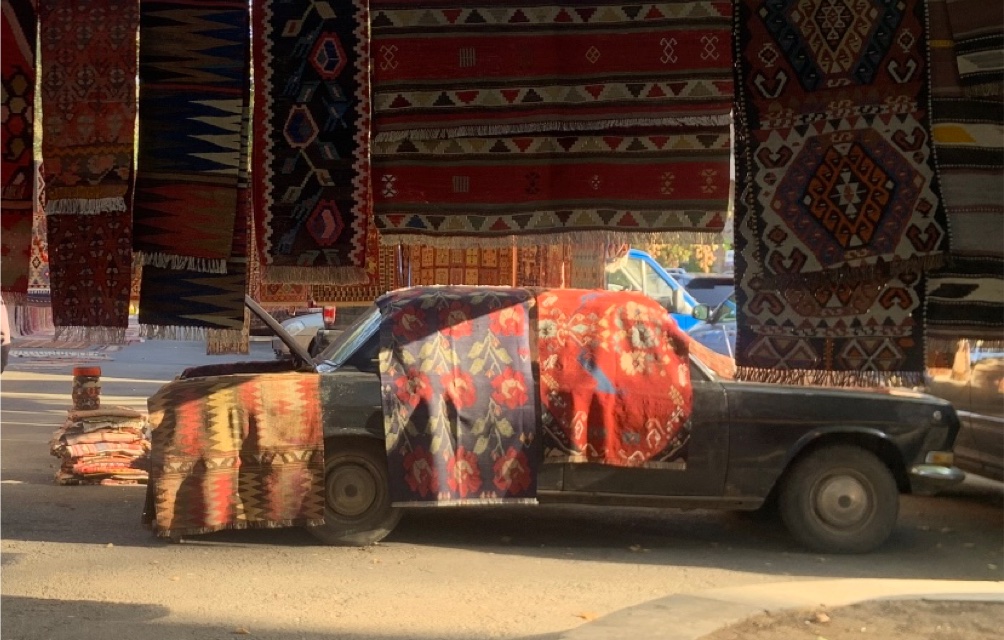
In a dark and narrow bar in the centre of Yerevan, Alan, an Armenian-American attorney from Los Angeles, is animatedly addressing the viral Roman Empire trend. That is, the question of how often one thinks about the Roman Empire. Numerous theories are offered to account for the meme’s popularity: the subject’s role in shaping conceptions of masculinity in Western societies; gender dynamics; the political and military histories of ancient Rome and modern warfare. Alan proposes something more conspiratorial: the meme, he claims, is used as a means to further weaken and erode the primacy of Western empire within the popular imagination.
But what constitutes the Western empire? he asks. Is it a question of territory, political economy and religion, or something symbolic or mythic? The Hellenistic and Byzantine periods conversed across empires, into the Russian Empire by way of the imperial family structure, he argues. The Russians at the table vigorously disagree, attempting to argue, but they cannot match his volume.
I first met Alan on an earlier night at this same bar, after overhearing an extraordinarily loud American several tables over, and he ended up joining me and my friend. She and the other locals are equal parts amused and vexed by his presence, which has an air of the maniacal to it. I like him. He becomes something of a fixture during our frequent evenings in the bar, and Anahit points to him as an example of the difference between Armenia-residing Armenians and diaspora Armenians — the latter have an optimism Armenians do not possess; they experience Armenian culture on native soil as something almost novel. But no one can begrudge that. No one asks to be born anywhere; certainly not those whose ancestors were cast out from their Eden.
Expats and home-based Armenians rarely mix, I am told. For some, it is a question of class and wealth — the expats are seen as rich, as those who will arrive for a time, absorb the heirlooms, then depart again for the West. I tell Anahit about a recent evening at another bar, across town, an expat bar I was dragged to by a former boyfriend from New York City visiting the Caucasus who wants to introduce me to his journalist buddies. It so happens that the occasion is a kind of farewell finale event for some young diaspora Armenians, largely Americans, who have participated in a months-long exchange programme in Yerevan. The MC is hosting an Armenian trivia night, delivering questions and facts to do with history, renowned performers, lines of literature. The tiny bar is packed. Each time an answer is declared correct the room erupts. I describe the event as a kind of theatre to Anahit, who responds with her own question: What is a culture? Is it imagined? Or is there something stable that runs underneath our ideas of nationhood and national identity?
Armenia has always had to assert its independent identity, and it has depended on a somewhat hermetic existence. But its population composition is changing: with the war in Ukraine, many Russians have fled to Armenia and Georgia, altering relations and changing the scape of the countries. Where Armenians are largely welcoming, many Georgians tend less so, viewing Russians as responsible for driving up rents and changing the nature of its culture to the extent that nationalistic sentiments, and tensions, are rife. Armenia is itself caught between traditional religious conservatism and modern diaspora cosmopolitanism. Language, education and religion have kept the Armenian people united throughout the centuries, but the influence of the West is increasingly difficult to withstand. Secularism and assimilation can seem inevitable. This is seen in the robust bond between Armenia and the United States, often expressed in almost familial gestures: Glendale in Los Angeles is known as ‘Little Armenia’; Glendale Hills is the name of an enclave of apartments in Yerevan where my friend lives.
Anoush, a Communist friend of Anahit’s, is scathing of the role of the church in Armenian culture and points also to the hypocrisy and paternalism of the West — for her, the golden days were those just prior to the collapse of the Soviet Union, when there was a softening on trade relations but nothing like the rampant and pervasive neoliberal policies of today. She bemoans the materialistic attitudes of young Armenians, who covet Western culture and dress like Americans with their fast-fashion copies. But many objects in the built environment inherited from Soviet days — from children’s playgrounds to trash cans — are of the same mettle as the USSR: designed to last, though not necessarily achieving that aim. Anoush describes a United Nations convention on environmentalism, where those who presented implored countries to reduce their use of plastic. “But that’s what we always did,” she intones. “We had no plastic, no plastic bags. Now they tell the world to live as we always did.”
Anahit is also critical of Western hypocrisy and outsiders who fail to understand Armenia. Western journalists “come in here and bluster, and create tensions”, she says. She is particularly unimpressed by one prominent American journalist covering the Nagorno-Karabakh war, saying that the journalist gets facts wrong, doesn’t check her sources. “She hasn’t been to Azerbaijan to hear their side.”
“Armenians don’t want tensions with Azeris — and anyway, we did once kick thousands of Azeris out.”
Later that evening, sitting in a recklessly driven taxi fighting with the congested night traffic that winds around the city, I am reminded of Karen, a taxi driver my friend and I met outside ruins on the outskirts of Yerevan. He subsequently drove us around the countryside, skirting the borders of Azerbaijan and Iran and high into mountainous terrain, deep into canyons. In places, remnants of warfare were evident; trenches and stone structures impressed within the landscape. In others, infantry in fatigues rumbled through the streets in olive army tanks that looked from their age and condition to be relics of the Soviet days, their metal cannons rusted and frail.
When we first met Karen, he was not long out of hospital. He’d been bitten by a viper while he was retrieving apricots from a tree in his yard and was hospitalised for months. He acquired a permanent limp and marginal use of his left foot. With his little English and my scraps of Russian we follow the contours of conversation slowly; we are forced to choose our words carefully. Karen, like most Armenians, earns very little money. He has lost a great many friends to war. On one trip, he describes in vivid detail, translated by my friend, a fatal crash he once witnessed. He scrolls through his phone to share photos while driving at breakneck speeds. He likes to overtake by veering into oncoming traffic, including in long tunnels cut through the mountains — slamming the brakes to avoid head-on collisions. “It’s the Caucasus,” he assures us. “That’s just how we drive.”
Surveying the landscape from a canyon where we stopped for lunch on one sojourn, he remarked that it was “peaceful, the fresh air. But you can’t enjoy it for a minute because you remember the situation.”
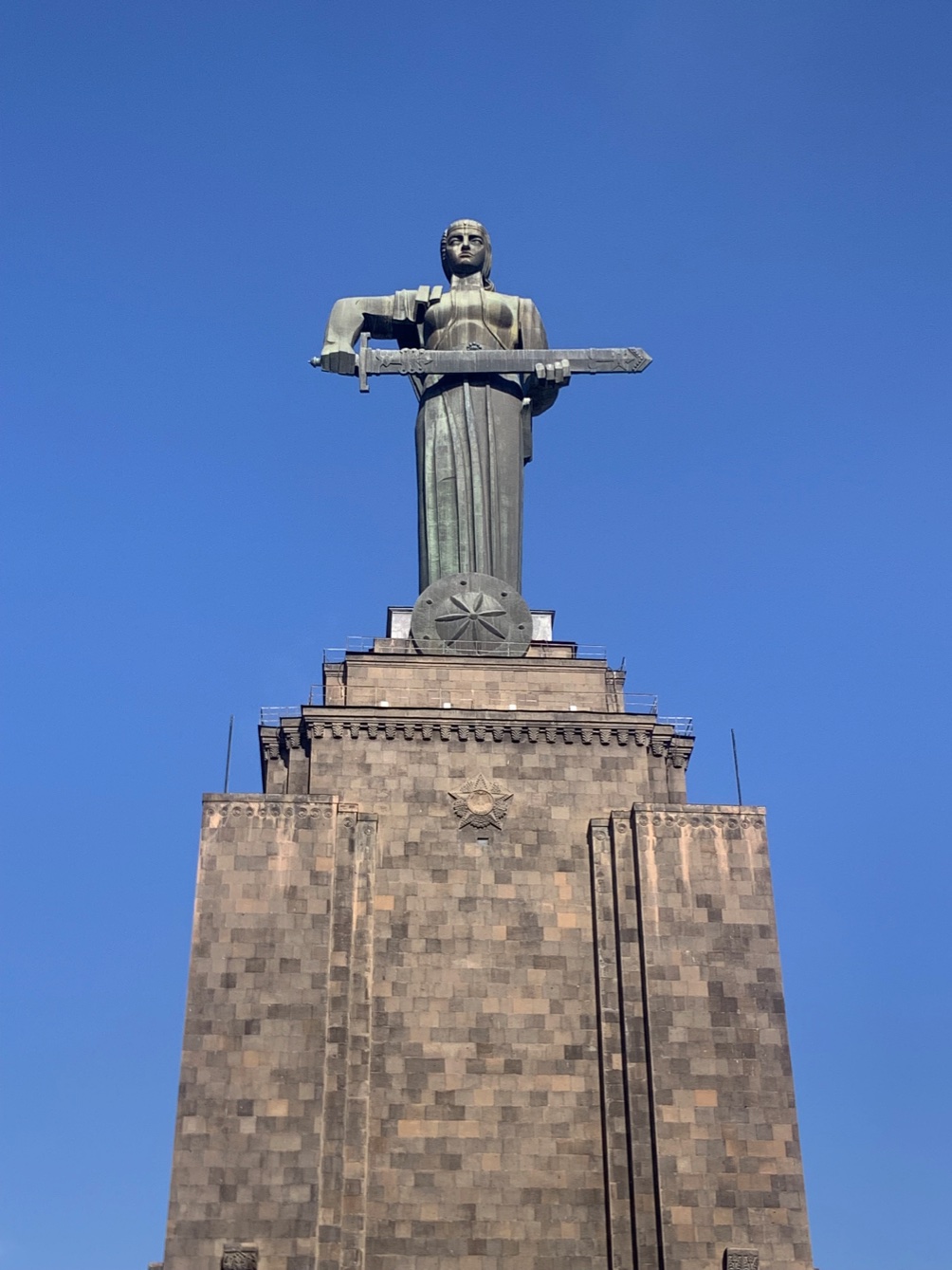
The Matenadaran museum, or the Mesrop Mashtots Institute of Ancient Manuscripts, soars at the tip of Mashtots Ave, Yerevan’s major thoroughfare. Appearing as a handsome and immense temple, its rectangular grey face stands grave on the hillside, watchful over the city, commanding an imposing reverence. The building is architecturally magnificent. Its façade is said to have been inspired by a 12th-century narthex — an architectural feature of early Christian and Byzantine basilicas and churches. Inside its archives are 23,000 manuscripts and scrolls and more than 500,000 other documents: religious and theological works, liturgies, texts on mathematics, rhetoric, astrology, astronomy, and translations from Greek and Syriac. I spend hours in its depths.
One late afternoon, through iron-latticed windows on the third floor, I look down over the long artery of Mashtots disappearing into a red blur of car backlights. The city is encircled in dusk and soft fog, the sky above the colour of stewed pomegranates and apricots. Inside, behind me, are crowds of soldiers, all young men, gathered around the various exhibits. It appears they are here to receive cultural and historical instruction. They are eager and attentive — listening closely to the museum guide relaying information; moving as an olive-green sea in polished black boots laced through eight eyes and with black belts cinched around their waists. In an adjacent room are photographs displayed in cabinets, many of which depict refugees after the genocide, people who exist now only as a sepia blur.
Susan Sontag famously pronounced that everything exists to end in a photograph, borrowing the conceit from Mallarmé, who at the close of the 19th century declared that everything exists to end up in a book. Both assertions are open to conjecture but remain true, and never more so than in a time of war. Melancholic documentarian of the postwar American landscape Robert Frank believed that a photo must contain the humanity of the moment. Over multiple viewings I watch a film shot by the Danish missionary and social worker Karen Jeppe (1876–1935) that depicts orphans and widows who survived the genocide. In grainy black-and-white footage of orphanages and provisional housing in Deir ez-Zor, a town on the banks of the Euphrates in the Syrian desert, children gather and jump into a fountain to wash. They hold hands in a dancing circle. On my laptop screen earlier that day I saw similarly devastating images of children in a makeshift camp in Gaza.
The children’s joy is somehow more painful to witness than their sorrow. Over a string symphony of lament, a mother sits on a stoop. She instructs her child to look at the camera, adjusts and tidies his clothing. In a stone courtyard, women march in procession. They hang sheets starched white on thin clotheslines. The shots are swift, the eye of the camera roving. Women are seated on dusty floors; women are neat and tidy in dresses, heels and headscarves; women perform needlework, seated on rugs covering the sandy ground. The camera observes the desert with its bare-boned trees.
The museum closes. Outside, the young servicemen pose on the steps for a group photograph. Nearly all the men I have met here have served — most have lost friends; many have lost limbs, sight and hearing. As the soldiers descend the steps toward Mashtots Ave, they link arms, hold hands, hug.
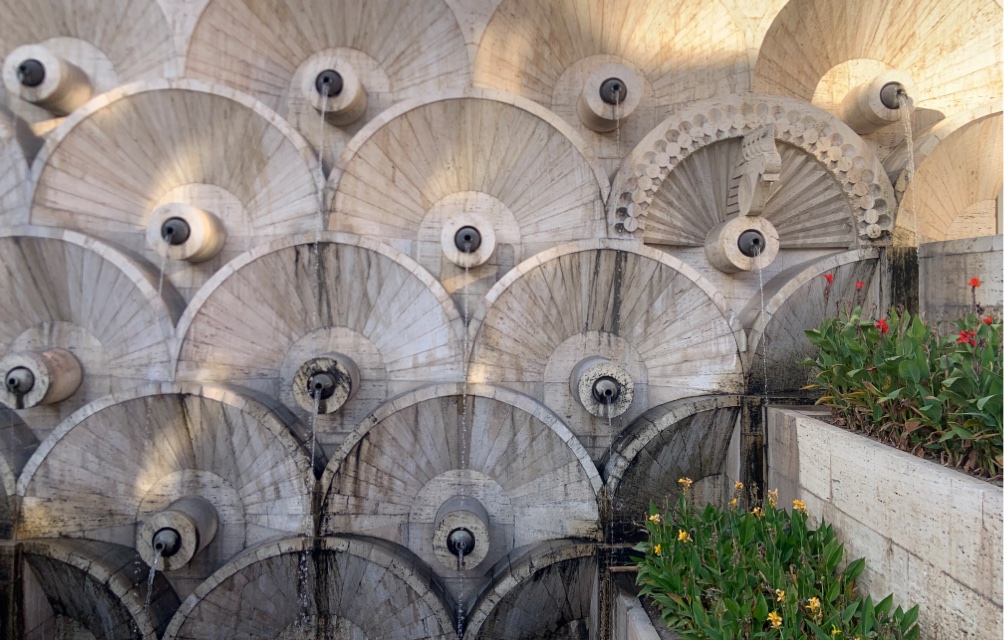
People are not abstract, they are concrete, Hayk is saying. In arguing over questions of epistemology, he says, language is stupid. “Alone, we do not possess intellect,” he continues, his voice strong and clear. “It arises only when we are together.” We are at a small party, seated around a large table. A flat-screen TV affixed to the wall is playing music videos by Ace of Base, Guns N’ Roses, Pink Floyd. The room stops its rowdy conversation when a favourite song plays, sharing memories of it as it ends. The table is scattered with empty Coca-Cola bottles, arrangements of grapes, dates and walnuts, bottles of vodka, cigarette packets and plastic bags of warm lavash. Davit, a Jordanian-Armenian photojournalist whose mother, an Iraqi-Armenian beloved by all in the room, recently passed, describes his childhood spent in the Armenian Quarter, one of the four enclaves of the walled Old City of Jerusalem. Armenians are the only people to have a quarter, alongside those of the three monotheistic faiths.
The Armenian presence in Jerusalem dates back to the 4th century AD and is considered to be the oldest diaspora population. But life there has proved difficult for Armenians to maintain, given the quarter’s location within Israeli-controlled West Jerusalem and near the holy sites in the Jewish Quarter. For many Jerusalem Armenians, including Davit, their status as Jordanian citizens — they are considered by the Israeli government to be ‘permanent residents’, the same status that Palestinians have — makes life complicated. Regarding them as Palestinian Christians, the Israeli bureaucracy imposes delays and difficulties with official documents and issues with travel, and the population is dwindling due to the high cost of housing and other obstacles. Essentially the community lives within a walled compound, an insular existence born of necessity. Tensions and altercations are frequently reported, with the Armenian patriarchate voicing concerns over harassment, including spitting by Haredi Jews on Armenian clergy, students and teachers, which are met with indifference by police. One article on the subject from 2019 describes ethnic profiling, the approval by Israel’s Supreme Court of the sale of three historic Greek Orthodox church properties to a Jewish settler group, and the denial of official residency status to clergy who have lived in the Armenian monastery for decades. Without residency, they must pay as tourists for public services, including healthcare. Davit, a member of the Armenian Apostolic Church, speaks Hebrew and Arabic (learned from watching television as a child) alongside his native tongue and English. When he was growing up in Jerusalem, he says, “All the best things on TV were Israeli.” He was welcomed in Christian, Muslim, Druze homes.
Davit renders a scene. He is 11 or 12 and playing an arcade game under the stone arches of a cobbled alley in the Old City. A pair of Israeli police ask where he’s from; he responds that he’s Armenian. They shrug. Davit possesses the requisite coins for the game, but doesn’t realise a button needs to be released under the console. He approaches the owner, telling him it doesn’t work. He then figures it out. The owner advances and watches Davit insert a coin before starting to play. He grabs Davit by the back of the neck and beats him up, right there on the street. Davit recounts the story with slight indifference, the kind of dispassion that betrays far worse experiences. He grows heated and bitter when speaking of Netanyahu, “who calls us Amalek [the biblical enemies of the Israelites]. He ruined everything.”
The conversation returns to Armenia. Barkev sighs. “I don’t want to stereotype, but this country brings together the East and the West, and the best and worst parts of both.” Speaking of the current government, led since 2018 by Prime Minister Nikol Pashinyan, formerly a journalist and newspaper editor, he says: “Pashinyan was so loved, but within a week became the bane of everyone’s existence. The government is in absolute shambles. And it has become Westernised, consumerised, neoliberal.”
Sovereignty, Barkev warns, is not a given but something you have to defend. He also fondly remembers the 1990s: waiting in line for hours for bread as a child, running under the legs of adults in the queue, the enormous geopolitical changes as a result of the Soviet break-up. “Some of my happiest times,” he says, looking out the darkened window. “The country was so poor. It’s hard to imagine now. And the recovery from the earthquake, the war in ’92…”
The following day, reading through my scraps of notes, I find, unattributed: They’ve taken on the violence they call civilisation, that says some people have rights and some don’t… just as we had to break the back of tsarism… Another, perhaps from the pages of a book: We believed that history did not apply to us, that we were exceptional… Memory is forbidden (but memory is stubborn).
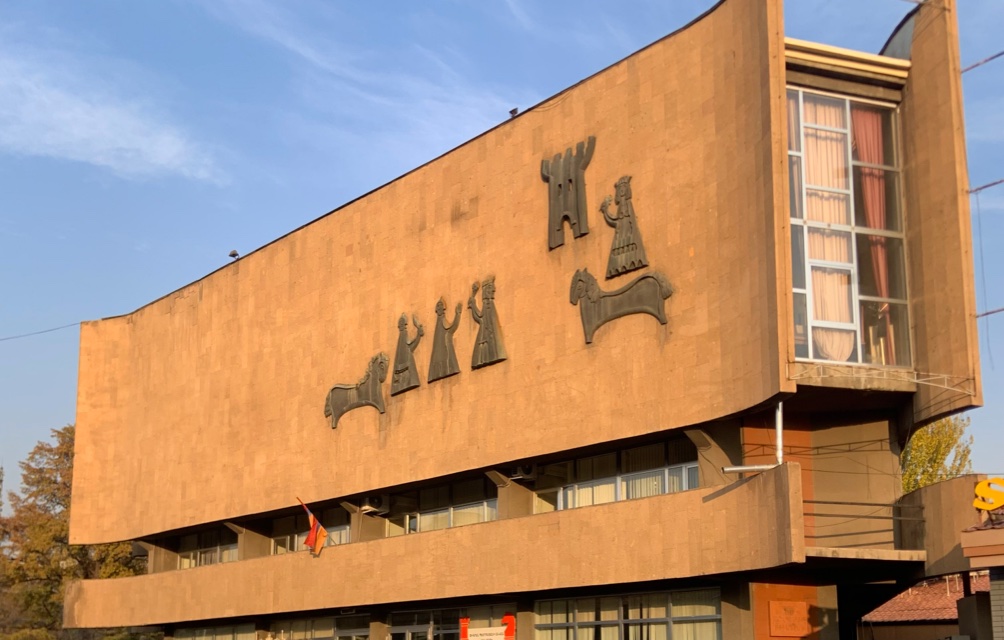
By now, I have been in Armenia for some months. On my final day in Yerevan the air is frozen against a watery sun. There are rumours of snow this morning after a dusting last night. The moon is high and faint in the distance. I walk down Abovyan toward Mher Mkrtchyan square, passing the stone arches that fortify the entrance gates of hard-to-navigate courtyards. The same stalls selling swollen figs and shining pomegranates that were previously seeking shelter from the harshness of the sun are now covered by blue tarpaulin against snow. Under the stretched sheets are the fruit’s dried offerings, small bags of walnuts, bunches of bright green dill, handmade straw brooms. In preparation for winter, quilts embroidered with small flowers are rolled and bound for sale; mounds of melon and dark butternut are arranged in elegiac arrangements. The street today is sweet with perfume.
I have in one hand a thin cigarette; the other hand is stuffed in the pocket of my cream fur coat, for I’m without gloves. I am in pursuit of a military museum situated on one of the narrow avenues that extend into undisclosed courts, and my map is unhelpful. Up and down the street, without result. There are two men in their 30s standing nearby, smoking. One is tall and handsome, in a plaid shirt and Levi’s; the other shorter, black Ray-Bans shielding his eyes, a ring in his ear. There is snow on the street. I approach the pair and ask whether they know the museum. They look at the map, glance around. They aren’t sure either. Across the road from us, where the map shows the museum to be, are long sheets of corrugated iron braced by steel balustrades. Behind is a walled concrete void, enclosed by the ruins of a barricade. The concrete buildings under construction, swathed in scaffolding and rubble, instead appear half demolished, manned by a security guard who ambles around the premises, drawing on a cigarette. Buildings separated by crescent passages adjoined to other streets vanish into the landscape.
They’re not from Armenia, the two men tell me. They’re from Shiraz, in southern Iran, and have been living in Yerevan for some years while awaiting approval into Germany. Shifting from foot to foot on account of the cold, they tell me they’ve applied for residency four times and been rejected each time. They are not sure what to do. One of their brothers was accepted into Finland. They want to leave here. They speak fluent German, having completed classes at the Goethe Institut. They’ve done all, and more, that is required of them. I think of friends in Germany I recently visited who have lived there for many years, with their irreproachable passports and approved nationalities, but have never learned the language. The taller of the two tells me they don’t know what more they can do. Each time they’ve applied it has cost $3000.
He works at a casino. It’s okay, he says. It’s not a great job, but it’s a job. Germany is again fascist, sure, he shrugs, but they want to study there, where university education is free, to better their lives. They enquire about my home country — they can’t imagine living so far from the world. I tell them that I wish I could be useful, we wish each other all the best, good luck, God bless. We shake hands and I depart.

